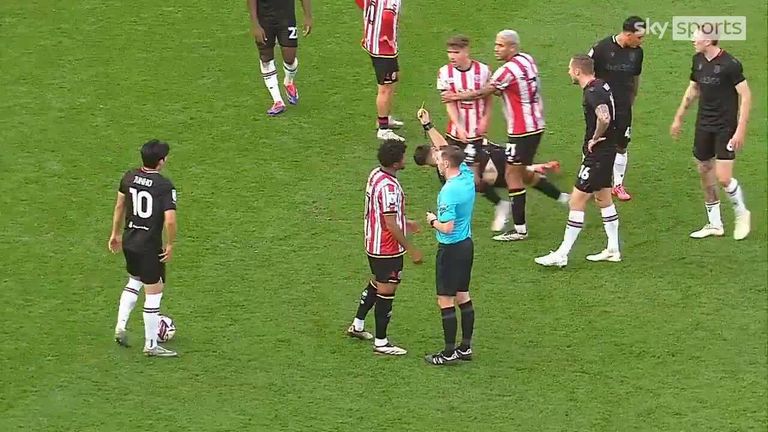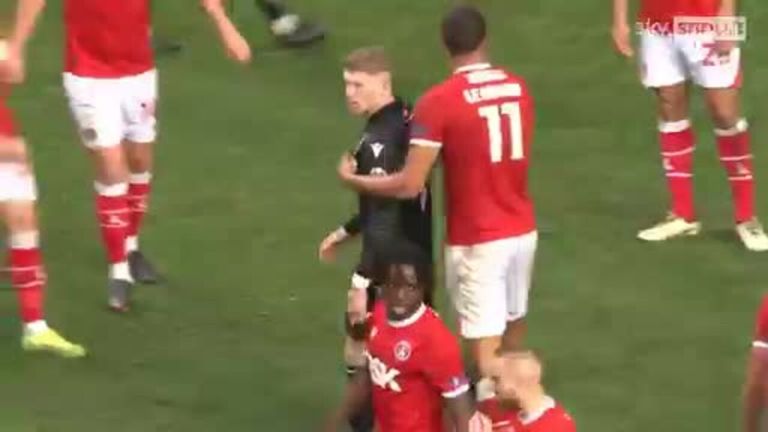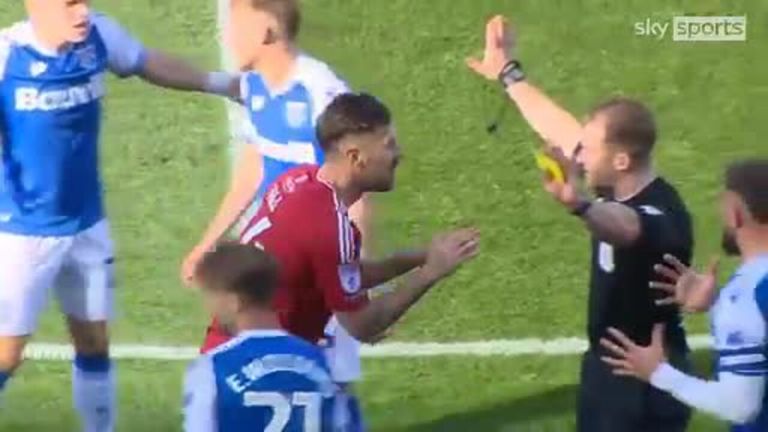[ad_1]
In Behind the Whistle, former Premier League referee Chris Foy goes through a selection of key match decisions from the latest action in the Sky Bet Championship, League One and League Two.
Behind the Whistle aims to give supporters of EFL clubs an insight into the decision-making considerations and also clarification of certain calls to provide an understanding of how the laws of the game are interpreted.
As part of a regular feature on Sky Sports following the conclusion of a matchday, Foy will be here to run you through some refereeing matters in the EFL…
Coventry 3-2 Luton
Incident: Possible second caution, holding (Luton Town)
Decision: Second caution awarded (Luton Town)
Foy says: For me, this is a good decision from the referee here as he correctly identifies that the clear holding from Luton Town’s No 29 warrants a second caution.
As Coventry City’s No 11 runs beyond his opponent, he is clearly held and prevented from progressing. Although there is no malicious intent, the holding is impactful and prevents his opponent from having a promising attacking opportunity. The referee therefore correctly shows him a second yellow card and dismisses him from the field of play.
Sheffield United 2-0 Stoke City
Incident: Possible red-card, serious foul play (Sheffield United)
Decision: Yellow card awarded (Sheffield United)
Foy says: I really like this clip as it highlights good game management and understanding from the referee.
Sheffield United’s No 7 makes a late tackle on his opponent. The actions of the Sheffield Utd No 7 are reckless, he makes the challenge from close proximity and does not go in with high speed, force or intensity, therefore it does not meet the threshold for a straight red.
The referee does well to understand the context. He correctly issues a yellow for the reckless challenge and has a word with No 7, ensuring the situation gets diffused there and then.
Norwich City 3-3 Middlesbrough
Incident: Possible penalty, foul (Middlesbrough)
Decision: Penalty awarded (Middlesbrough)
Foy says: The referee’s positioning here enables him to correctly identify that the challenge by the defender is mistimed and results in careless contact and is therefore a penalty.
The crowded box creates difficulty for this decision, however the referee’s awareness and positioning means that he is able to spot that Norwich No 33 mistimes his challenge, does not play the ball and trips his opponent. Therefore, it’s correct to point to the spot.
Charlton Athletic 2-2 Wrexham
Incident: Possible penalty, handball (Charlton Athletic)
Decision: Penalty awarded, handball (Charlton Athletic)
Foy says: Wrexham are unfortunate to be penalised for a handball incident here.
It’s important to remember that it is not every time the ball and arm come into contact that a handball should be given.
This is a good example, as although there is contact between the ball and the arm, Wrexham No 4’s arms are by his side and in a justifiable position given his actions. He is not trying to make his body bigger or deliberately move his arm to handle the ball.
The correct decision would have been for play to continue.
Swindon Town 1-1 Gillingham
Incident: Possible red card, serious foul play (Swindon Town)
Decision: Red card awarded (Swindon Town)
Foy says: This is a good example of teamwork between the referee and his assistant as they work together to reach the correct outcome.
Initially, the referee has his yellow card in his hand, but after consultation with his assistant referee about the severity of the challenge, a red card for serious foul play is correctly shown to No 24.
The tackle comes in at pace, and with the high force and intensity, it endangers the safety of the opponent.
[ad_2]
Source link




